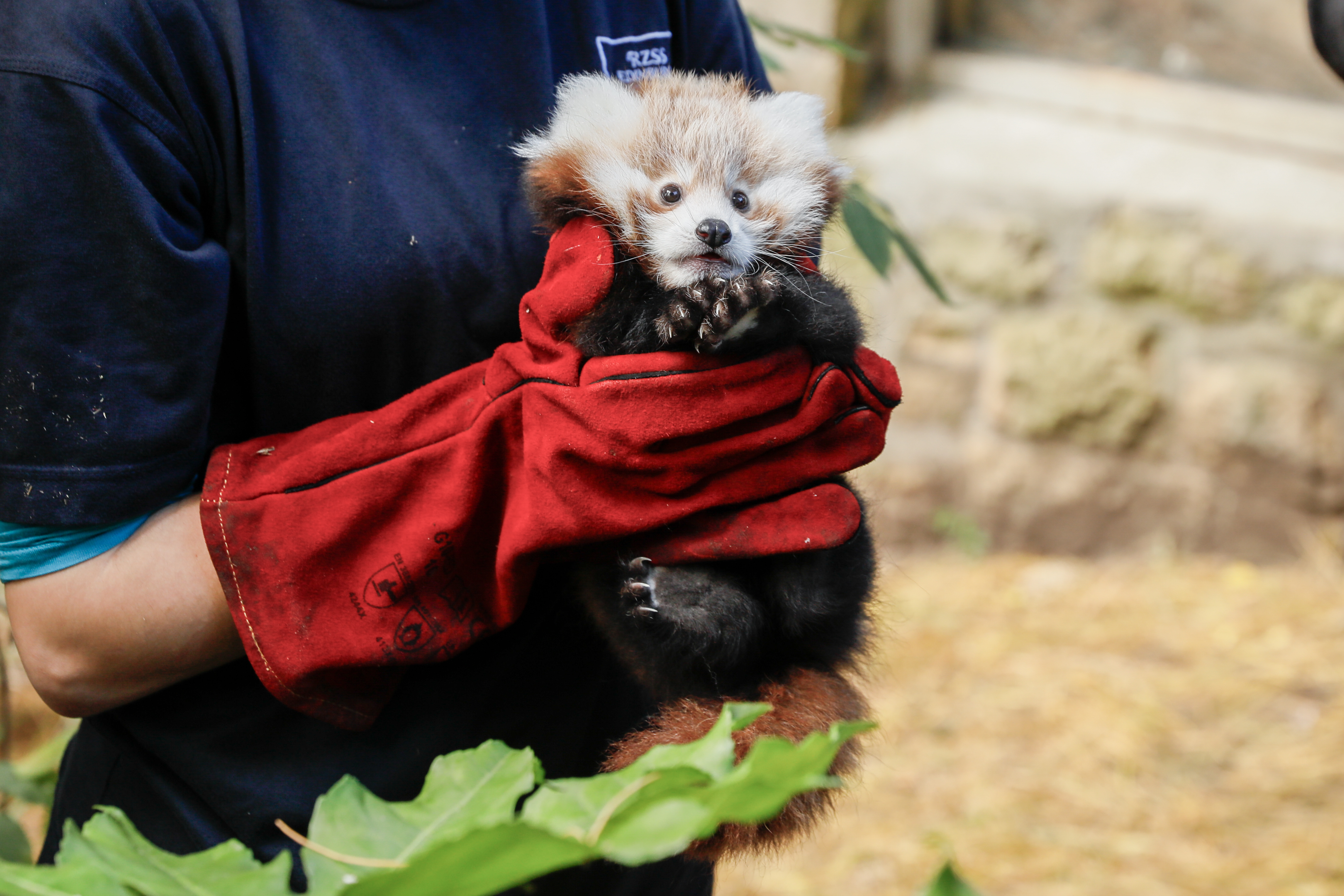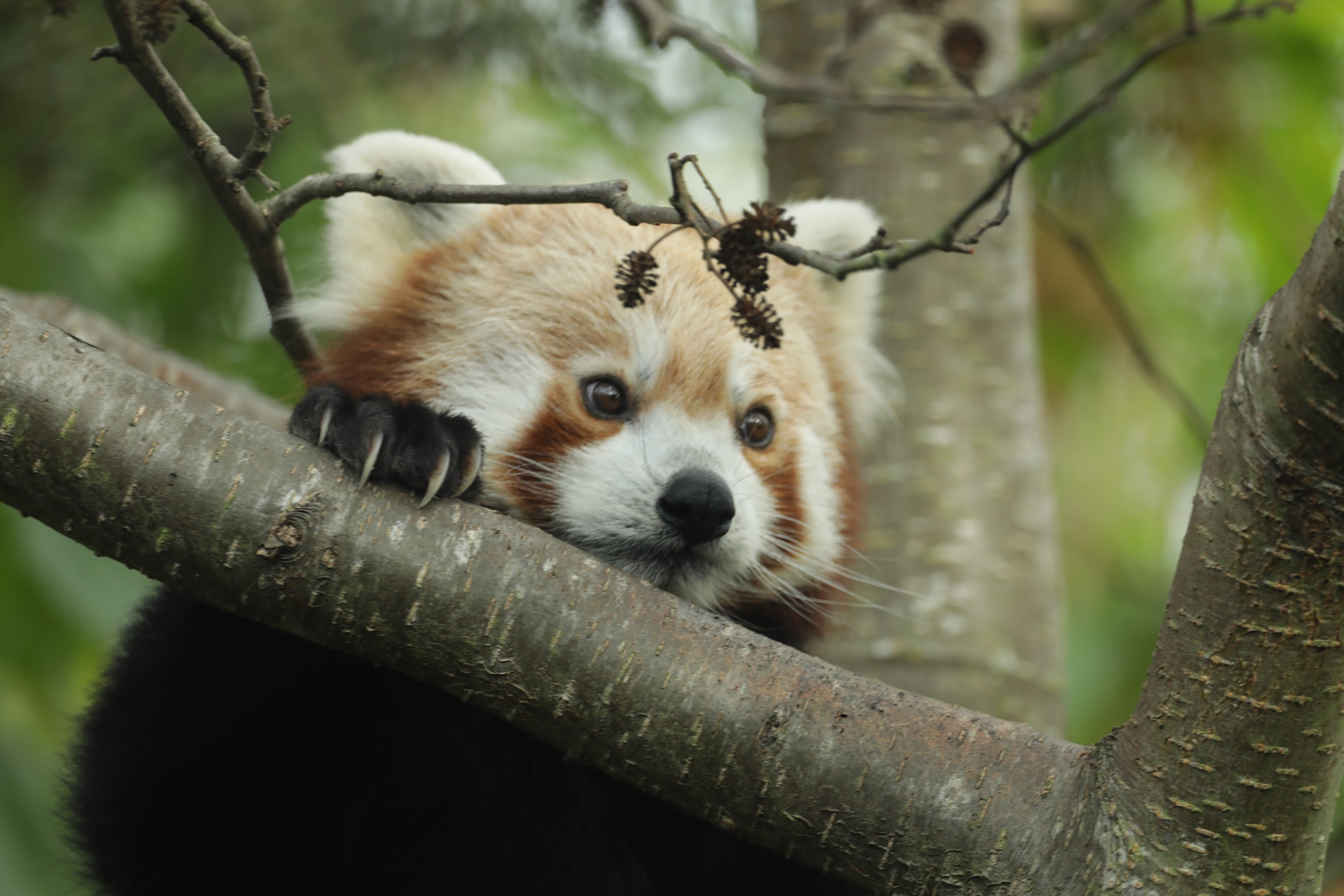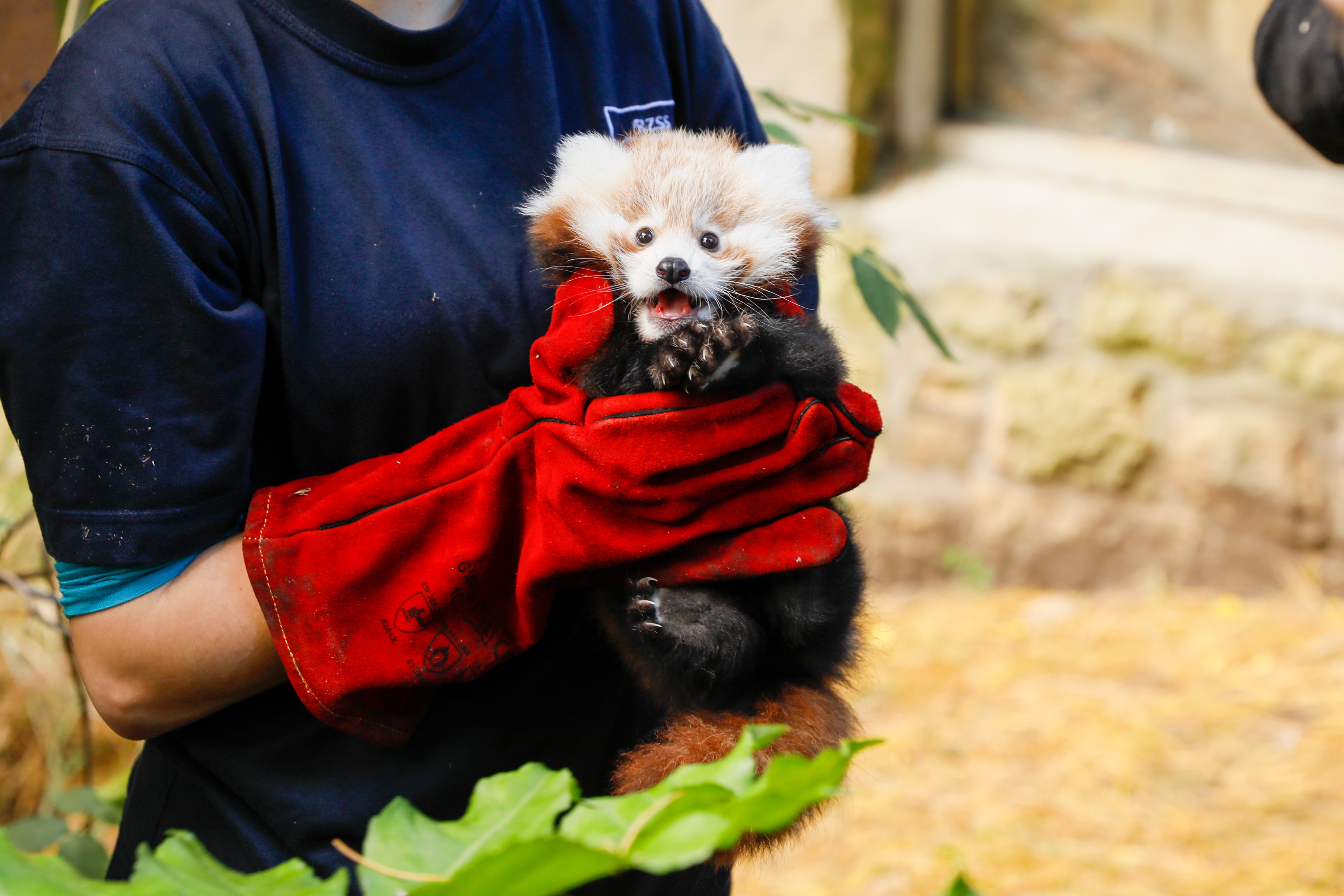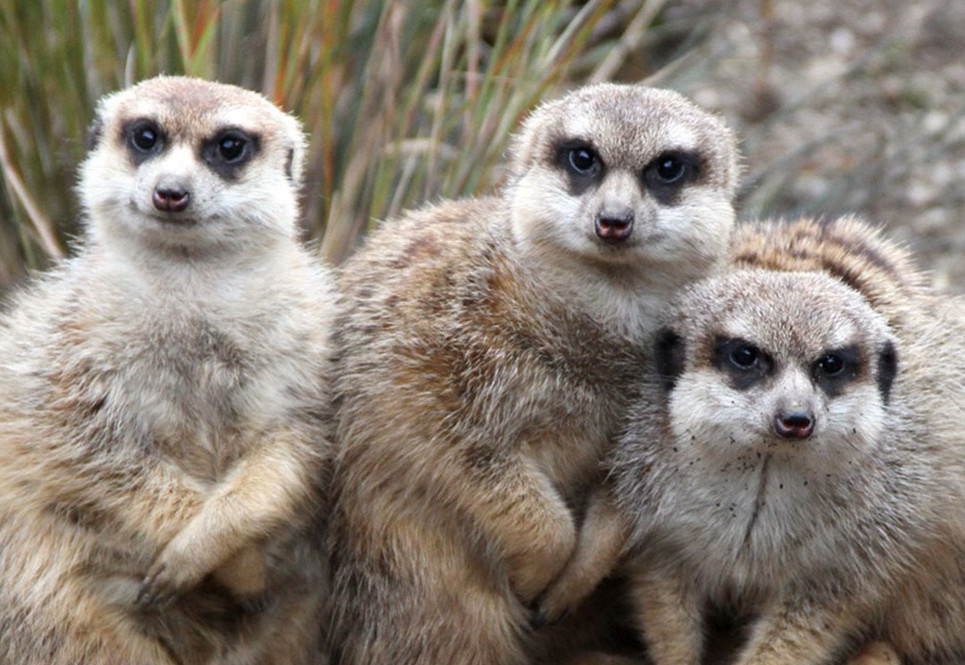Red panda
Ailurus fulgens
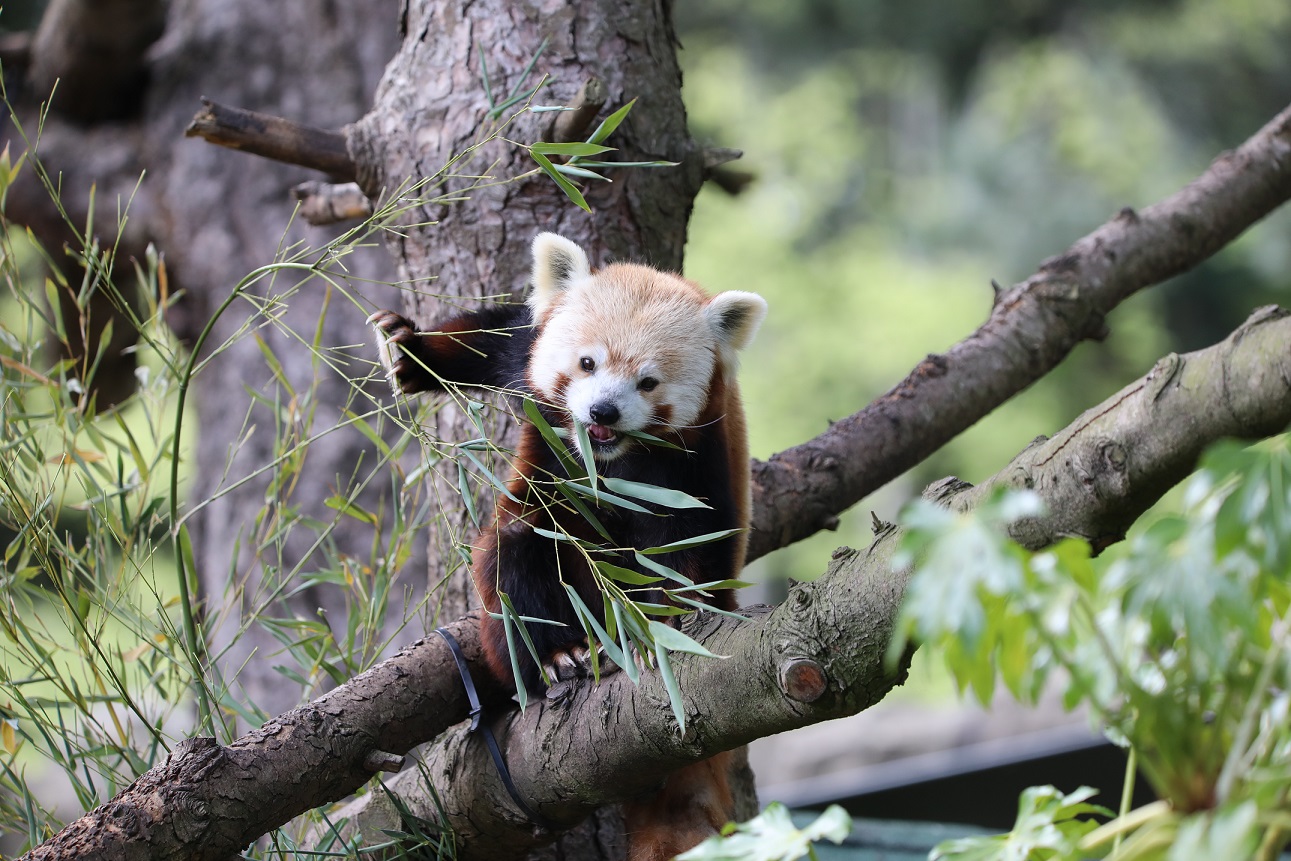
There are two red pandas here at Edinburgh Zoo – Priya and Bruce.
Bruce was born in 2015 and came to Edinburgh in 2016. He can be spotted in the enclosure near the main entrance.
Priya, our newest arrival, joined us in October 2024 from ZSL Whipsnade. Priya's arrival is extra special as her mum, Ruby, was born at Edinburgh Zoo in 2021 to parents Bruce and Ginger - making Priya their granddaughter!
Population
Decreasing
Diet
Herbivore
Habitat
Forest
Fact file
Red pandas share similarities with both the bear and racoon family. Their classification has caused controversy since they were first described in 1825, but today they are placed in their own separate family
Like the giant panda, red pandas have a modified wrist bone that acts like a sixth digit or false thumb. This helps them grip branches and their favourite food, bamboo
The name 'panda' comes from the Nepalese word 'nigalya panya', which means 'bamboo eater'
They are excellent climbers thanks to their semi-retractable claws, and when not searching for food, they are usually found in the trees
Latest red panda news
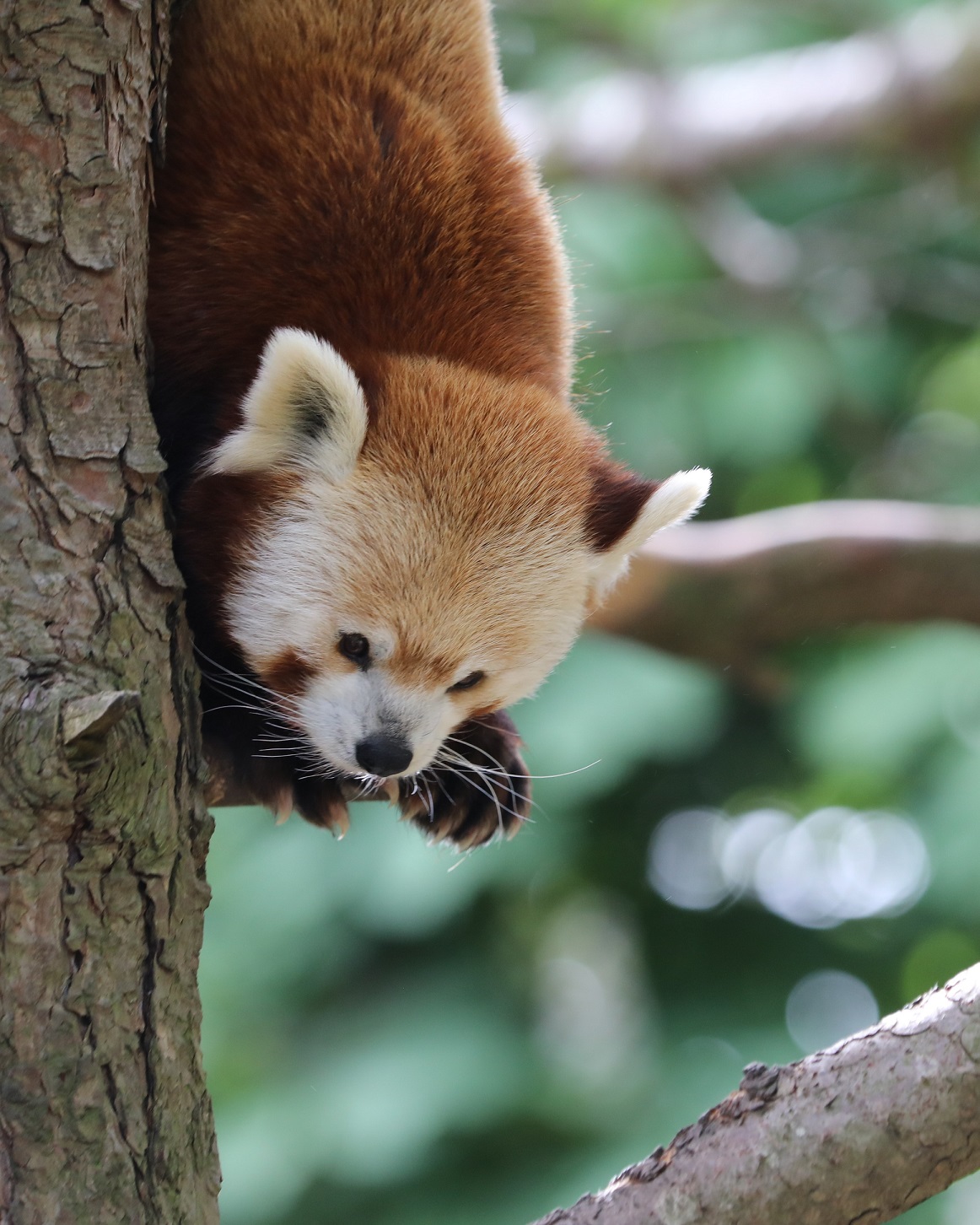
How we're helping
Like all the animals in our care, our red pandas are amazing ambassadors for their relatives in the wild and help hundreds of thousands of people connect with nature every year. They encourage visitors to learn about the threats facing wildlife and the action they can take to help create a world where nature is protected, valued and loved.
As a wildlife conservation charity, we care for the animals here at the zoo and work to protect species at risk around the world. From providing expertise in genetics and veterinary health, to protecting wild places with local conservation partners, and even restoring threatened species to the wild, we are active where we are needed most.
Find out more about RZSS conservation
